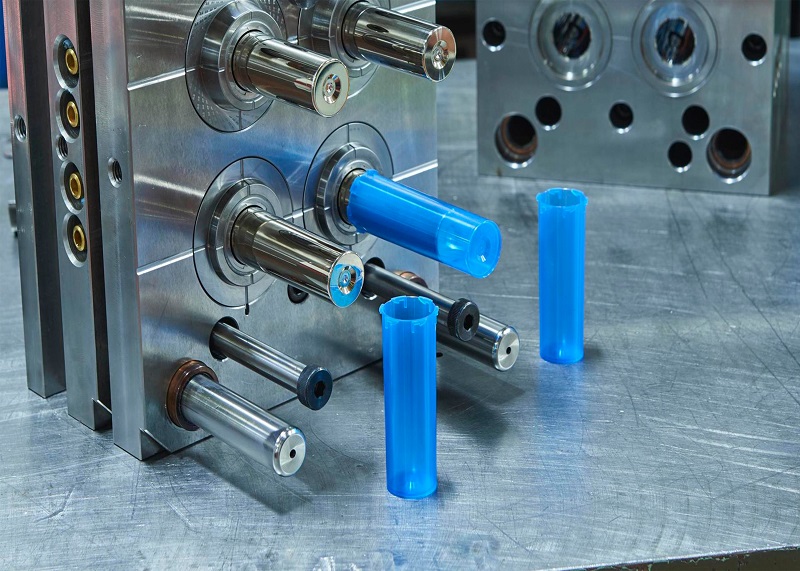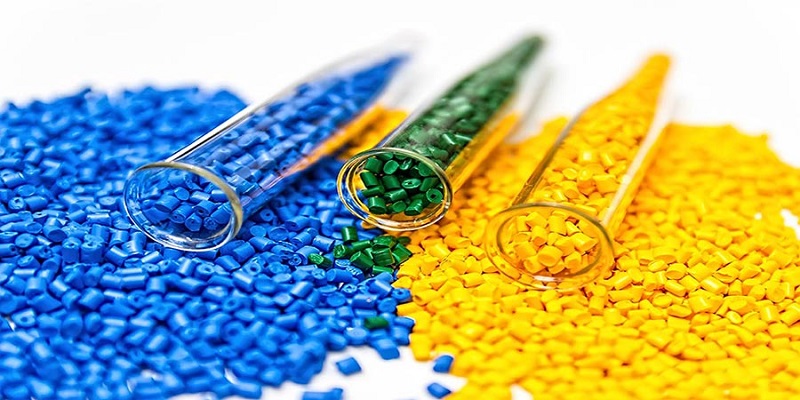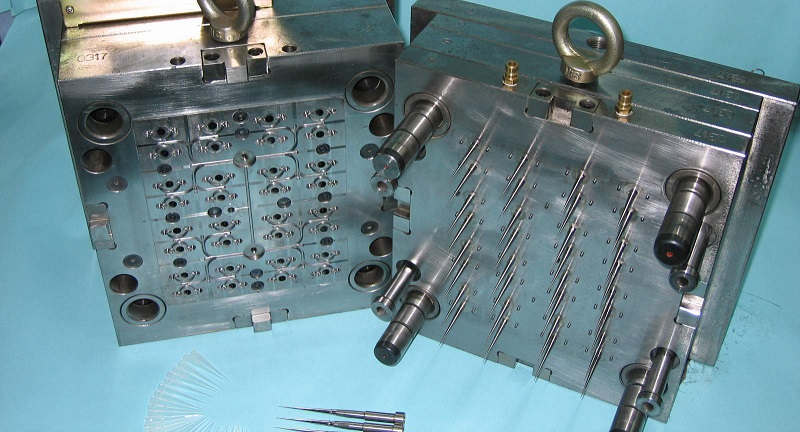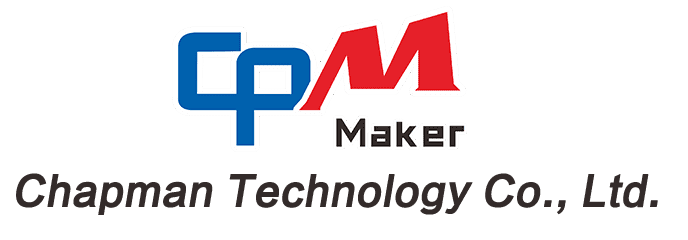When creating a product that requires molded plastic parts, depending on the type of application and type of part you want to produce, you have several processes to choose from. One of the most popular processes to achieve high quality and cost effective plastic parts is injection molding.

Injection molding is a manufacturing process for producing parts in large volume – from thousands to millions. Melted resin is injected into a hollow mold until it is completely filled. The injection molding process uses high temperature and extreme pressure to sufficiently fill the interior with molten plastic resin or liquid polymers. The molds are then cooled to release completed plastic parts.

The process is highly versatile and can produce a myriad of parts for a wide variety of applications.
Healthcare Industry: In the healthcare field, there are thousands of products that are made with the injection molding process. The healthcare industry relies heavily on multipurpose plastic products that can be manufactured in bulk, as many of these products are single use, disposable items to maintain sterility or to prevent the spread of germs or disease. From plastic syringes to tools used in medical procedures, injection molding is what helps the medical professionals get their jobs done.

Injection Molding is a very common manufacturing method used to produce everyday household items. The applications cover commercial, industrial, and consumer products alike. Injection molding offers the versatility to generate designs that have intricate detail or complexity, down to simpler forms in any range of sizes from small to large objects.
This method has produced solid parts such as electronic housings, bottle caps, containers, computers, televisions components, outdoor furniture, agricultural products, toys, machinery components, and much more.
How Does Injection Molding Work?
Injection molds must have a high precision match between the two mold halves in order to perfectly control the material flow. Creating the mold is crucial to building a seamless, precision product. Injection molds are typically constructed using steel or aluminum, and precision machined to form the features of desired product.

The injection molding process is fairly repetitive once a functional, errorless mold has been produced. It also has a low scrap rate relative to other manufacturing processes such as CNC machining which cut away considerable portions of the original material blank in a subtractive process.
The Injection molding process is highly repeatable and reliable for high volume production. Once the first part is produced, the second is going to be practically identical, due to the ability to make multi-cavity injection mold parts, where multiple parts are made with one cycle. Other advantages are the wide range of material selection, low labor costs, minimal scrap losses, and minimal requirements to for post-molding finishing operations.
The major disadvantages of injection molding are the initial costs of the mold design, which tends to be high due to design, testing, and tooling requirements and the longer required lead times. Some custom complex parts may encounter problems during the injection molding process such as warpage or surface defects. Therefore, injection molded parts must be designed with careful consideration to any change in geometry as they cool and the material selection to assure stability.
Conclusion
The process of injection molding may seem like a complex one, but it’s the most common manufacturing method because of its capability and efficiency to produce a plethora of everyday items. Injection molding is one of the most cost effective ways to build both functional prototypes and end use products.
If you are very lucky to read this article, you also happen to need the manufacture and production of plastic parts, please do not hesitate to contact Chapman Maker. Our team will provide you with high-quality service and technical guidance.
Email: info@chapmanmaker.com
Post time: Apr-07-2021
